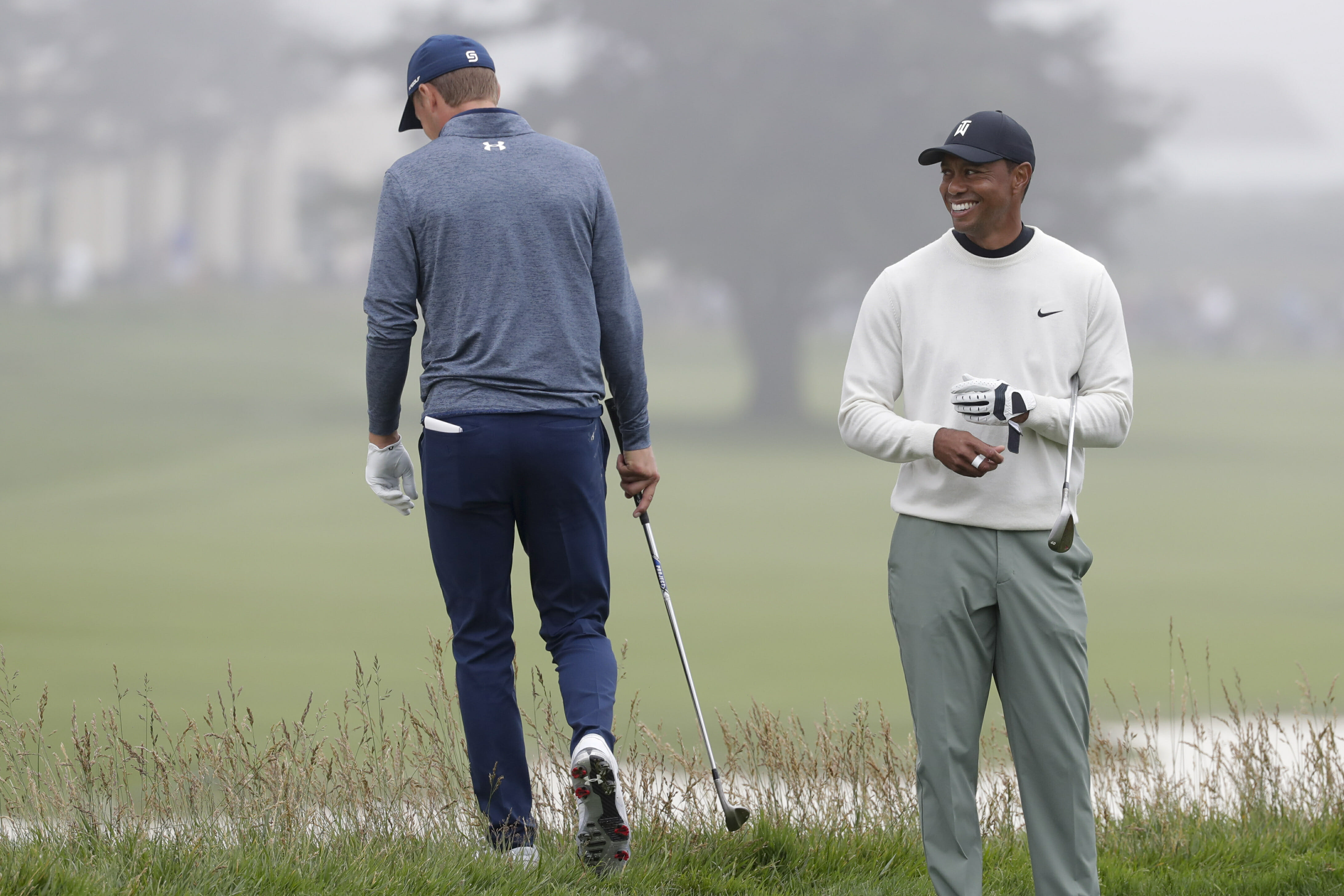
A beautiful course, a beast of a US Open at Pebble Beach
PEBBLE BEACH, Calif. (AP) — Tiger Woods and Jordan Spieth began the final day of U.S. Open preparation with a walk along the beach.
No other U.S. Open has such a calming effect, especially the seven-hole stretch along the Pacific coast with sweeping views of sea lions basking on the rocks below the sixth green and people walking dogs on the seashore below the 10th fairway.
“What’s not to like?” Dustin Johnson said. “The golf course is fantastic from start to finish. When you’ve got nice weather, it’s quite beautiful out there.”
About the time Woods and Spieth, along with Justin Thomas and Kevin Kisner, began their nine-hole practice round Wednesday on No. 10, fog crept over the foothills and soon blanketed the course. Visibility was reduced to about 250 yards.
It was an ominous sign the U.S. Open is no holiday.
Johnson is among the early starters when the 119th U.S. Open begins Thursday at Pebble Beach, which is celebrating its 100th year.
He is one of the favorites, not only from his sheer skill, but historical reasons whether it’s February or June. Johnson has won the AT&T Pebble Beach Pro-Am twice and was runner-up twice. The last time the U.S. Open was at Pebble, he had a three-shot lead going into the final round until he rushed his way through a triple bogey, a double bogey and a bogey before he reached the fifth hole. Johnson shot 82 and tied for eighth.
“The golf course was great,” Johnson said about 2010. “I feel like the golf course is getting to where it’s going to play like that later on this week. It’s going to play tough. You’ve got to be very, very precise.”
The USGA says it used 2010 as a blueprint for this U.S. Open, with a few exceptions. A tree that seems to be in the middle of the 18th fairway is now only a few paces from the rough on the right because of how much the fairway was narrowed.
The rough is lush as ever. The greens are small, and they look even smaller when not hitting from the fairway.
This is what a U.S. Open is supposed to look like.
“We’re going into this week with a great plan, and part of that plan is to do what we’ve always done,” said John Bodenhamer, the senior managing director of championships for the USGA. “We will continue to endeavor to provide the toughest test, the ultimate test, the most comprehensive test, whatever you want to call it. And really just to create something where players’ shot-making ability, mental resolve, physical stamina are tested.”
Adding to the anticipation is how the other two majors turned out this year.
Nothing can top what Woods did at the Masters, where he emerged from a six-player pack on the back nine at Augusta National to win his fifth green jacket and 15th major in a career that only two years ago looked to be done in by back problems.
Brooks Koepka showed his major prowess, along with plenty of resolve, when he set a PGA Championship record with a seven-shot lead through 54 holes, nearly lost it, and then held on to beat Johnson by two shots.
Koepka now goes for three straight U.S. Open titles, a feat only accomplished more than a century ago. Johnson looks for atonement from his U.S. Open meltdown at Pebble Beach. No one has greater history at Pebble Beach than Woods, not so much by number of victories but margin of victory. His 15-shot win in 2000 is nearly as iconic as the course itself.
“It’s not the same body I had back in 2000,” Woods said. “I don’t think any of us have the same body we had 19 years ago. Athletically, that’s one of the challenges.”
The course figures to present its own set of challenges.
Woods recalls not missing a putt inside 10 feet in 2000. That’s not likely to happen again, for him or anyone. Power never hurts anywhere in golf, though it’s not as necessary as venues like Erin Hills or Torrey Pines.
“How do you put the ball in the correct position is the key,” Woods said. “And these greens … we don’t face greens like this, this small and this steep. And so it puts a premium on iron play, because I feel like most of the field can drive the ball in the fairways. The golf course is not overly long. It’s where to put the ball in the right spots so you can have putts at it.”
Woods and Spieth will be in the same group Thursday afternoon when it counts. Spieth won the AT&T Pebble Beach Pro-Am three years ago and is starting to round into form as he approaches the two-year anniversary of his last win.
“It’s just one of the most amazing pieces of property in the world, and the fact that we get to play golf on it is pretty amazing,” Spieth said. “And to have a major championship on it is even more special. It’s certainly a very different golf course than we’re used to seeing in February. With the weather we have, the USGA should be able to control the golf course the way they want to.”
The USGA wants to get it right after four years of various mishaps. More anything, it wants a strong test. That starts Thursday.
The Western Journal has not reviewed this Associated Press story prior to publication. Therefore, it may contain editorial bias or may in some other way not meet our normal editorial standards. It is provided to our readers as a service from The Western Journal.
Truth and Accuracy
We are committed to truth and accuracy in all of our journalism. Read our editorial standards.
Advertise with The Western Journal and reach millions of highly engaged readers, while supporting our work. Advertise Today.












